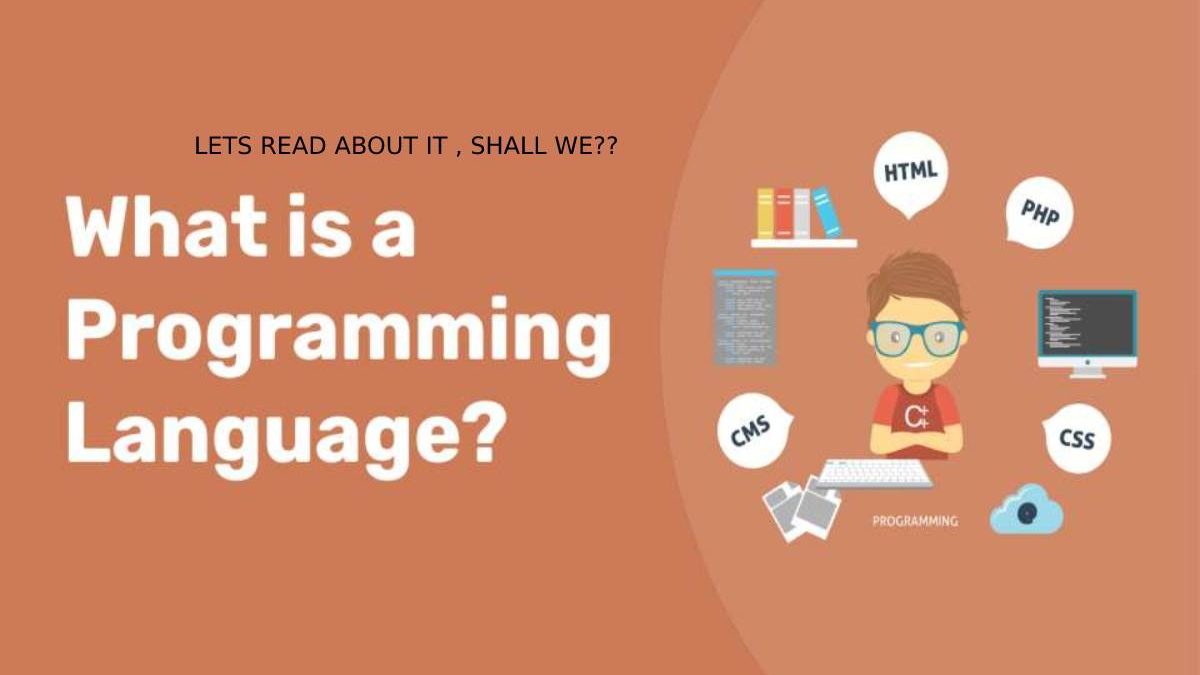Table of Contents
Programming Language
What is a programming language As we know, we need a specific language to communicate with a person like to communicate with computers, programmers and also essential a language called binary language.
Before we learn the language, let’s understand what the language is.
What is language?
Language is a means of communication used to share ideas and opinions. And for example, if we want to impart someone, so we need language understandable to both communicators.
What is a Programming Language?
A programming language is a computer language used by programmers (developers) to communicate with computers. But, instructions are written in a specific language (C, C++, Java, Python) and achieve a particular job.
A programming language to develop desktop applications, and also websites and mobile applications.
Types of Programming Languages
1. Low-Level Programming Language
The low-level language is a machine-dependent (0 and 1) programming language. The processor runs low-level programs straight without the need for a compiler and interpreter, because allowing programs written in low-level language to sprint.
I. Machine Language
Machine language is a kind of low-level language. And It is also called machine code or object code. Where machine language is easier to recite because it is binary and hexadecimal. In addition, no translator to convert programs because computers understand machine language programs directly.
The benefit of machine language is so it supports the programmer run programs faster than an advanced language.
ii. Assembly Language
Assembly Language (ASM) is also a low-level designed for specific processors. And it signifies the set of instructions in a symbolic and human-understandable way. And it uses an assembler to convert assembly language into machine language.
The benefit of assembly language is but it needs less memory and less execution time to run a program.
2. High-Level Programming Language
High-Level Language (HLL) develops user-friendly software and websites. And this language requires a compiler and an interpreter to translate the program into machine language
The foremost advantage of a high-level language is that it is informal to read, write and maintain.
The high-level programming language includes Python, Java, JavaScript, PHP, C#, C++, Objective C, Cobol, Perl, Pascal, LISP, FORTRAN and Swift.
I. Procedural Programming Language
The procedure-oriented language (POP) from structured and procedure calls. And it breaks a program into minor procedures called routines but also functions.
A software programmer uses the procedural language to create a program although that can use because programming editor such because IDE, Adobe Dreamweaver, and Microsoft Visual Studio.
The advantage of the POP language is but it helps programmers follow the program flow quickly.
The advantage of the POP language is but it helps programmers follow the program flow quickly, and the code is reusable in different parts of the program.
Example: C, FORTRAN, Basic, Pascal, and etc.
ii. Object-Oriented Language.
The object-oriented language (OOP) is base on objects. And in this language, programs are changing into small parts called things. Form to implement real-world entities similar inheritance, polymorphism, and abstraction, etc., in the program to make it reusable, efficient and user-friendly.
The main benefit of object-oriented programming is but object-oriented programming is faster and easier to execute, maintain, change, and debug.
Note: The object-oriented language follows a bottom-up approach.
Example: C++, Java, Python, and C#, etc.
iii. Natural Language
Natural language is part of human languages like English, Russian, German and Japanese. Machines use it to understand, manipulate .https://www.computerworldblog.com/10-best-business-in-india/

